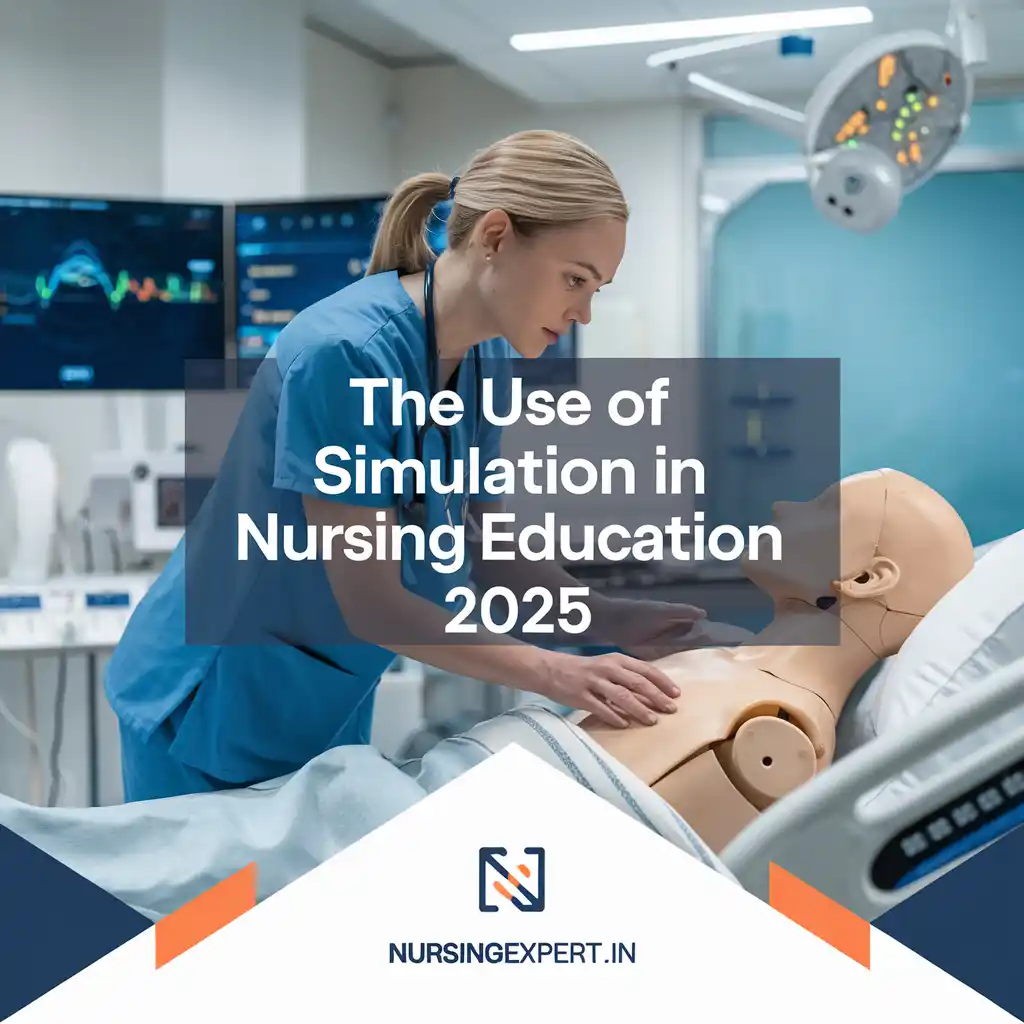Simulation is transforming nursing education by providing realistic, risk-free environments that allow students and practicing nurses to hone their skills and build confidence. In 2025, simulation-based learning has become an essential component of nursing education and professional development. Through advanced technology and immersive experiences, simulation not only bridges the gap between theory and practice but also enhances critical thinking, collaboration, and patient safety.
Thank you for reading this post, don't forget to subscribe!
Introduction
Imagine a nursing student who can practice clinical scenarios—from performing life-saving interventions to managing complex, rapidly evolving emergencies—without any risk to real patients. That is the promise of simulation in nursing education. As technology advances and healthcare challenges become increasingly complex, simulation provides a safe, effective, and engaging way for nurses to prepare for real-world situations. In 2025, simulation is more than just a training tool; it is a transformative approach that enhances the quality, consistency, and safety of patient care.


Nurses and educators are leveraging simulation to offer realistic clinical experiences, bridge gaps in knowledge, and develop the soft skills needed to manage stress and work as part of a multidisciplinary team. This article explores best practices for using simulation in nursing education, discussing its benefits, addressing potential challenges, and looking toward future trends.
Understanding Simulation in Nursing Education
a. What is Simulation?
Simulation in nursing education refers to the use of technology and realistic scenarios to mimic clinical situations. It can range from low-fidelity role-playing and task trainers to high-fidelity mannequins, virtual reality (VR), and augmented reality (AR) platforms.
- Low-Fidelity Simulation: Uses basic models or role-play situations to develop fundamental skills.
- High-Fidelity Simulation: Involves advanced mannequins or computer-based scenarios that closely replicate human responses.
- Virtual and Augmented Reality: Offers immersive experiences where students can interact with digital patients in lifelike environments.
b. The Role of Simulation
Simulation bridges theoretical learning and clinical practice. It serves several key purposes:
- Skills Development: Enhances procedural skills and clinical decision-making.
- Error Prevention: Allows learners to practice and refine techniques, reducing the risk of errors in real-life situations.
- Interprofessional Collaboration: Provides opportunities for teamwork and communication among different healthcare providers.
- Crisis Management: Prepares nurses for high-stress scenarios by simulating emergencies in a safe environment.
Best Practices for Using Simulation in Nursing Education
a. Developing Realistic Scenarios
i. Align Scenarios with Learning Objectives
- Design simulations based on realistic clinical situations that mirror common challenges nurses face in practice.
- Tailor scenarios to meet specific learning objectives, such as managing anaphylaxis or conducting a comprehensive patient assessment.
ii. Involve Clinical Experts
- Collaborate with experienced nurses, physicians, and other specialists to ensure simulations are clinically relevant and evidence-based.
- Regularly update scenarios to reflect changes in best practices and emerging health issues.
b. Creating an Engaging Learning Environment
i. Use High-Fidelity Simulations
- Invest in technology that creates realistic, interactive experiences to engage learners fully.
- Incorporate VR or AR to enhance immersion, particularly for complex procedures or rare events.
ii. Encourage Active Participation
- Promote a “learn by doing” approach where students can make decisions, observe outcomes, and reflect on their performance.
- Allow learners to take on various roles within the simulation to understand different perspectives within the care team.
c. Debriefing and Reflective Practice
i. Structured Debriefing Sessions
- After each simulation, hold debriefing sessions to discuss what happened, why it happened, and what can be improved.
- Use open-ended questions to encourage critical thinking and self-reflection among participants.
ii. Feedback and Evaluation
- Provide constructive feedback to reinforce strengths and address weaknesses.
- Utilize video recordings of simulations to allow learners to review their performance and learn from mistakes.
d. Integrating Simulation into the Curriculum
i. Consistent Scheduling
- Embed simulation exercises regularly throughout the curriculum to reinforce learning over time rather than as isolated events.
- Ensure that simulation experiences are aligned with theoretical coursework and clinical rotations.
ii. Interprofessional Education
- Incorporate collaborative simulation sessions where nursing students work alongside other healthcare professional students to enhance teamwork and communication skills.
- Foster an understanding of the roles each team member plays in patient care to build a cohesive, patient-centered approach.
e. Utilizing Technology and Innovation
i. Leverage Digital Platforms
- Use digital platforms to manage simulation scheduling, record performance data, and provide supplemental educational resources.
- Integrate simulation software that allows for virtual learning experiences accessible to remote or busy learners.
ii. Continuous Quality Improvement
- Regularly assess and update simulation tools and scenarios based on emerging research and feedback from participants.
- Invest in professional development for educators to stay abreast of technological advancements and best practices in simulation-based learning.
Benefits of Simulation in Nursing Education
a. Enhanced Clinical Competence
Simulation training allows learners to practice skills repeatedly in a controlled environment, leading to improved proficiency and confidence.
- Students become better prepared for real-life emergencies by experiencing high-pressure situations multiple times.
b. Improved Patient Safety
By practicing in simulated scenarios, nurses can refine their techniques, reduce errors, and adopt safer practices, leading to better patient outcomes.
c. Bridging Theory and Practice
Simulation helps translate classroom learning into practical skills, ensuring that theoretical knowledge is applied effectively in clinical settings.
- It supports a smoother transition from student to practicing nurse.
d. Fostering Teamwork and Communication
Interprofessional simulation exercises encourage collaboration among healthcare providers, improving overall communication and teamwork.
- Enhanced interprofessional dynamics lead to integrated patient care and reduced miscommunication.
e. Promoting Reflective Practice
Debriefing sessions after simulations create opportunities for reflection, self-evaluation, and continuous improvement, which are essential for lifelong learning in nursing.
Challenges in Simulation-Based Learning
a. High Costs and Resource Constraints
- Investment in Equipment: High-fidelity simulators, VR systems, and digital platforms can be expensive to acquire and maintain.
- Time and Staffing: Scheduling simulation sessions amidst busy clinical rotations and shifts can be challenging.
b. Technology Adoption
- User Resistance: Some learners and educators may resist adopting new technologies, preferring traditional methods.
- Technical Issues: Equipment malfunctions or software glitches can disrupt sessions and affect learning outcomes.
c. Ensuring Realism and Relevance
- Scenario Limitations: Simulated environments may not always capture the full complexity of real-world clinical situations.
- Continuous Updating: Keeping simulation scenarios up-to-date with the latest clinical guidelines and research requires ongoing effort.
d. Evaluation and Feedback
- Subjective Assessment: Evaluating performance during simulations can be subjective and may vary between instructors.
- Time-Consuming Debriefing: Comprehensive debriefing sessions, while invaluable, can extend the duration of training sessions.
Future Trends in Simulation for Nursing Education
a. Advances in Virtual and Augmented Reality
- Immersive Learning Environments: VR and AR will continue to evolve, offering even more realistic, immersive simulation experiences that closely mimic real-life scenarios.
- Scalable Training: These technologies will make simulation-based learning more accessible to a broader range of learners, including remote and under-resourced areas.
b. AI-Enhanced Simulation Tools
- Personalized Feedback: AI-driven analytics will provide real-time, personalized feedback during simulations, helping learners identify and correct errors more quickly.
- Adaptive Learning Systems: Advanced simulation systems will tailor scenarios to each learner’s performance, ensuring a customized learning experience that maximizes skill development.
c. Expanded Interprofessional Collaboration
- Global Virtual Networks: Enhanced virtual learning platforms will enable interprofessional simulation sessions across different locations and institutions, promoting a more cohesive approach to patient care.
- Standardized Competencies: International collaboration will drive the creation of standardized interprofessional competencies, ensuring that simulation training is consistent and effective worldwide.
d. Policy and Funding Support
- Increased Investment: Growing evidence of improved patient outcomes from simulation training will encourage more healthcare institutions and governments to invest in these technologies.
- Regulatory Guidelines: Future policies may mandate the incorporation of simulation-based training as a standard component of nursing education and professional development.
Frequently Asked Questions (FAQs)
Q1: What is simulation in nursing education?
A: Simulation in nursing education uses technology, such as mannequins, virtual reality, and computer-based simulations, to create realistic clinical scenarios. It enables nurses to practice skills, make decisions, and learn in a safe, controlled environment.
Q2: How does simulation improve patient care?
A: Simulation enhances clinical skills, improves decision-making, reduces errors, and facilitates teamwork. By practicing in realistic scenarios, nurses build confidence and competence, leading to better patient outcomes.
Q3: What types of simulation are used in nursing education?
A: Simulation methods range from low-fidelity role-playing and task trainers to high-fidelity mannequins, virtual reality environments, and augmented reality tools that mimic real-life clinical situations.
Q4: How do simulations integrate into the nursing curriculum?
A: Simulations are incorporated throughout the curriculum via scheduled training sessions, interdisciplinary workshops, clinical rotations, and continuous professional development programs that complement theoretical learning.
Q5: What challenges do institutions face in implementing simulation training?
A: Common challenges include high costs, technological barriers, time constraints, and the need for ongoing training and updates to ensure scenarios reflect current clinical practice.
Q6: How is AI being used in simulation training?
A: AI enhances simulation by providing personalized feedback, adapting scenarios in real time, and analyzing performance data to identify areas for improvement, thus optimizing the learning experience.
Q7: What future trends are expected in simulation-based nursing education?
A: Future trends include the further integration of VR and AR, the expansion of AI-powered adaptive learning systems, global virtual interprofessional training programs, and increased investment in simulation as a core component of nursing education.
Conclusion
Simulation-based learning has revolutionized nursing education by providing a safe, realistic platform for developing clinical skills and enhancing patient care. In 2025, as healthcare becomes more patient-centered and technology-driven, simulation remains a critical tool for preparing nurses to face real-world challenges. By integrating comprehensive assessments, personalized feedback, and interdisciplinary collaboration, simulation training not only bridges the gap between theory and practice but also fosters a culture of continuous improvement and innovation.
Nurses who embrace simulation are better equipped to handle the complexities of modern healthcare. Their ability to translate simulated experiences into effective clinical practice leads to improved patient outcomes, reduced errors, and a more confident, skilled workforce. As technology continues to evolve, the future of simulation in nursing education looks promising, with new tools and methodologies enhancing the learning experience and ensuring that nurses remain at the forefront of quality patient care.
References and Sources
- American Nurses Association (ANA). (2023). Simulation-Based Learning in Nursing Education. Retrieved from https://www.nursingworld.org
- Journal of Nursing Education. (2024). Innovative Approaches in Simulation Training. Retrieved from https://journals.lww.com/jne
- Institute for Healthcare Improvement (IHI). (2022). Using Simulation to Improve Patient Safety. Retrieved from https://www.ihi.org
- Peer-reviewed articles from the International Journal of Nursing Studies and Telemedicine and e-Health.
- Additional resources from the Society for Simulation in Healthcare and recent policy briefs on digital health in education.


